Writing Chapter 2 of your thesis — the dreaded Review of Related Literature — often feels like swimming in a sea of sources without a life vest. You start with a few studies, and suddenly your tabs multiply, your highlighter dries out, and you’re not even sure what you’re looking for anymore.
If you’re overwhelmed by too many articles and not enough clarity, you’re not alone.
This guide is your rescue rope — a clear, beginner-friendly approach to writing Chapter 2 without drowning. Whether you’re working on your undergraduate thesis, master’s paper, or Ph.D. dissertation, this blog will help you stay focused, organized, and confident as you write your literature review.
What is Chapter 2 (Review of Related Literature)?
Chapter 2 provides the foundation of your study. It’s where you explore what other researchers have already said about your topic, identify the gaps, and show how your study will contribute something new.
Think of it as:
- A map of existing knowledge.
- A conversation you’re joining.
- A bridge between your topic and your theoretical framework.
It’s not just a long list of summaries — it’s your interpretation of what’s out there.
Why Most Students Struggle
Let’s be real — most researchers make one (or all) of these mistakes:
- They collect too many sources.
- They copy-paste summaries without synthesis.
- They lose track of what’s relevant.
- They forget to connect the literature back to their own research.
If this sounds like you, don’t worry. We’re about to fix that.
Step-by-Step Guide to Writing Chapter 2
✅ Step 1: Clarify Your Research Focus
Before reading anything, know what you’re looking for. Start with your:
- Research title
- Research questions or objectives
- Key variables or concepts
This helps you search with purpose instead of downloading every article that mentions your topic.
✅ Step 2: Gather and Filter Sources
Use reliable databases like:
- Google Scholar
- PubMed
- JSTOR
- ScienceDirect
Search using keywords aligned with your topic. Choose:
- Peer-reviewed articles
- Studies within the last 5–10 years
- Sources that are directly connected to your research
📌 TIP: Don’t collect everything. Keep only what helps answer your research question.
✅ Step 3: Organize by Literature Theme (Not by Date)
Don’t just list articles one by one. Group them by themes, concepts, or patterns you notice.
For example:
- Theme 1: Digital literacy and academic performance
- Theme 2: Internet access as a learning barrier
- Theme 3: Socioeconomic factors and online education
This gives your chapter a clear structure and flow.
✅ Step 4: Analyze and Synthesize
Don’t just summarize each study — compare, contrast, and connect.
Ask yourself:
- Do these studies agree or contradict each other?
- What patterns do I see?
- What’s missing in the existing research?
- How do these findings relate to my study?
Your job: Show how the existing literature leads to your research gap.
✅ Step 5: Draft the Literature With Structure
Here’s a simple outline you can follow:
- Intro Paragraph:
Briefly state what this chapter will cover and how it’s organized. - Body/Thematic Sections:
Organize content into 2–5 themes, depending on your topic. Each section can include 3–6 related studies. - Synthesis/Gap Paragraph:
Summarize trends and identify what’s missing — this justifies your study. - Theoretical or Conceptual Framework (if part of Chapter 2):
State the theory/concept your study is anchored on.
Literature Review Hacks for Busy Researchers
- ✨ Use Citation Managers (Zotero, Mendeley, EndNote) to organize sources and auto-generate references.
- 🧠 Follow the 80/20 rule: Focus on the 20% of studies that give you 80% of the insights.
- 🗂️ Create a Literature Matrix — a table to track authors, year, methods, findings, and relevance to your study.
- ✍️ Write mini-reviews after reading each article so you don’t forget the key points later.
Sample Paragraph Breakdown
Numerous studies have explored the role of digital literacy in shaping academic performance. For instance, Santos (2021) found that students with higher digital competency tend to perform better in online learning environments. In contrast, Reyes (2020) argued that digital literacy alone is not enough — access to devices and internet quality play more critical roles. While both studies agree on the importance of tech-related skills, they differ in emphasis, highlighting the multifaceted nature of online academic success. However, few studies have focused specifically on rural senior high school students in the Philippines, creating a gap that this study aims to address.
✅ Notice how it compares, contrasts, and ends with a research gap.
Common Mistakes to Avoid
🚫 Dumping summaries without linking them together.
🚫 Using outdated sources unless they’re foundational.
🚫 Including irrelevant studies just to make the chapter longer.
🚫 Forgetting to relate the literature to your own objectives.
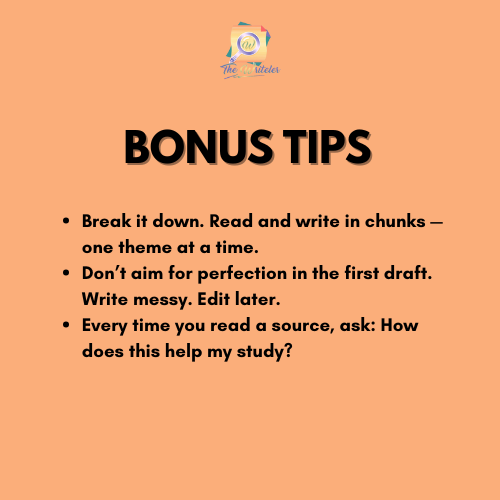
📣 Struggling With Chapter 2? We Can Help.
The Writeler Co. is here to support students and professionals who are juggling research with work, life, and business. Whether you’re writing a thesis, capstone, or dissertation for your master’s or Ph.D., we help you efficiently navigate the research journey — from brainstorming to proofreading.
📩 Message us today to get started.
📚 Let’s turn your research idea into a powerful paper.
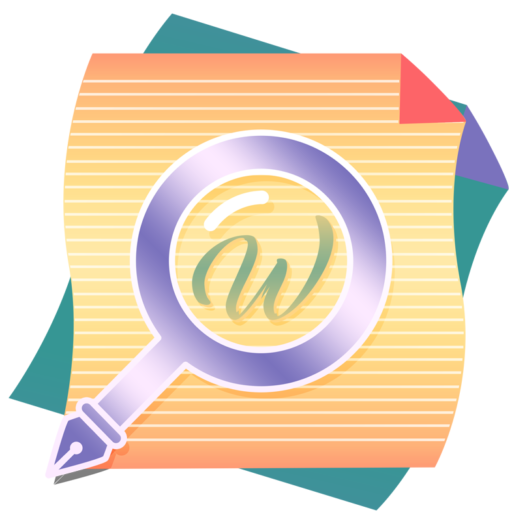
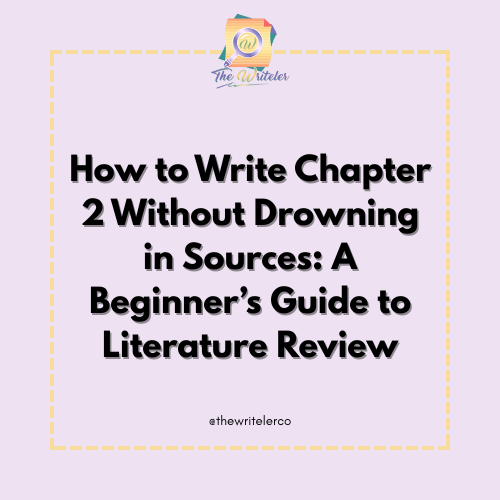
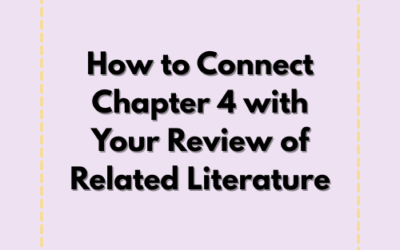

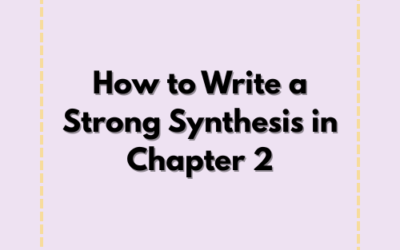
0 Comments